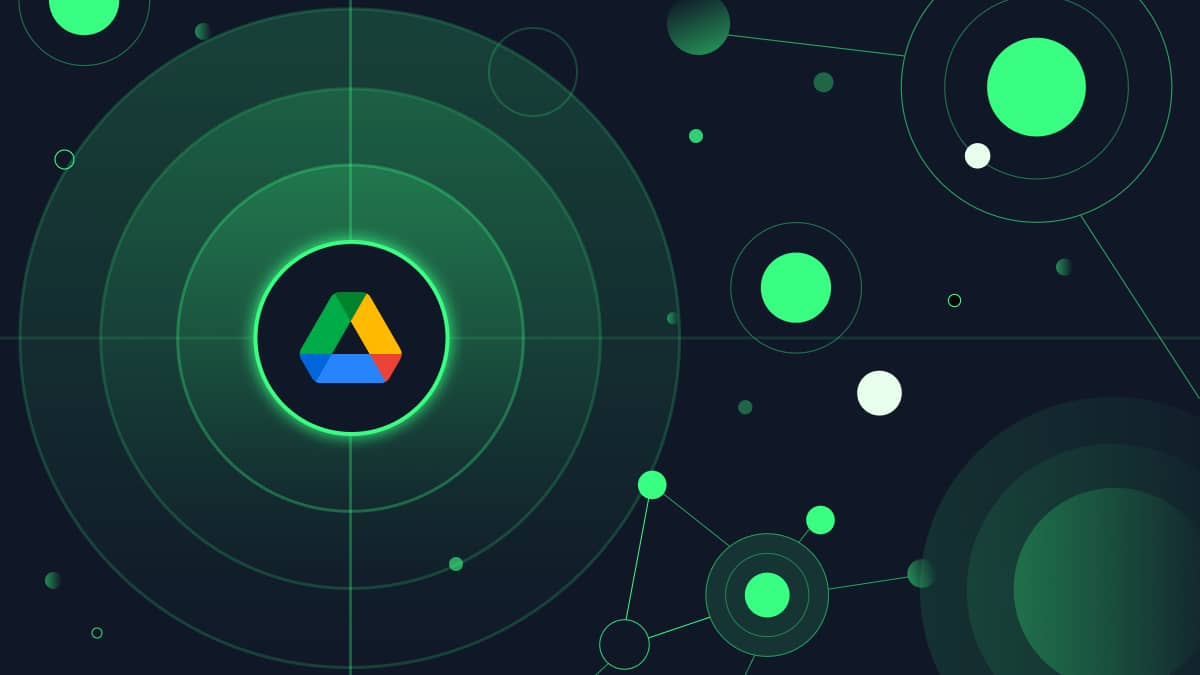Today, more than five million businesses pay to use Google Workspace. Even if your business is a Microsoft Office lover, there’s a high probability that at least some of your employees use tools like Google Docs and Google Sheets–whether you know about it or not!
It’s easy to see why people love Google Drive and its associated tools. Because the solution is cloud-based, your employees can access their files on any device, at any time, as long as they have the correct login and passcode. As well as this, Google Drive also offers a wealth of third-party plugins that can enhance the user experience, helping your people to be more efficient and improving collaboration.
Ok, that’s the good thing about Google Drive. Now, let’s talk about the negatives. Yes, you guessed it! Data security. The flexibility and easiness of accessing Google Drive is also one of its biggest downfalls when it comes to data security. Unless you have the right tools in place, your employee could unintentionally leak data or, worst yet, a hacker could get into your files and steal them, or even launch ransomware.
Left unchecked and unmanaged, SaaS tools like Slack and Google Drive are a catastrophic breach waiting to happen. This risk is even more prominent in highly regulated industries like healthcare and finance, where compliance requirements under PCI, GDPR and HIPAA mandate strict controls over the handling of sensitive data. Your business needs to ensure it gains control over Google Drive–and fast.
What are the data security risks of Google Drive?
Here are some of the major risks to data security associated with Google Drive:
The insider threat: The insider threat could be a disgruntled or unwitting employee or even a cybercriminal who has gained access to legitimate credentials. The tricky thing is, within Google Drive, it can be hard to tell who is who–and what data they’re accessing.
According to Panda Security, insider incidents have increased by 47% over the last two years. As more employees work from home, away from the watchful eyes of IT, many have become more laid back about corporate security policies. They may accidentally leave a Google file public, send confidential data to the wrong person by accident or share passwords amongst teams for ease of use. These practices increase the risk of a data breach, resulting in a costly compliance fine.
As well as this, we must remember that it is harder to verify that users are who they say they are when they access Google Drive. If hackers get access to your employee login details, do you have an authorization process in place that will stop them from accessing sensitive company data in Google Drive?
Unstructured data: Without a robust data governance strategy, your collaboration tools are likely a minefield of sprawling, sensitive, unstructured data; documents, videos, images, spreadsheets and more. You won’t have visibility into where sensitive data is, who has access to it and where it has been transferred to. This is a data breach and compliance failure waiting to happen.
We know from IBM that the cost of a data breach in 2021 was an astonishing $4.24 million per incident. So, finding and securing this data is something to be taken seriously.
Shadow IT: Google Drive is built for collaboration, but this can make keeping track of sensitive data super tricky and it’s easy to lose control. For example, an employee could upload a sensitive file with PII to Google Drive then download it onto their personal mobile device. This is a compliance fine but how is the IT team to know?
Essentially, if you haven’t got the proper compliance framework in place for managing data sprawl in Google Workspace, it’s likely that data leakage is occurring.

What about Google’s in-built DLP?
As part of the G Suite Admin console, Google offers a few in-built security tools that you can deploy, including DLP for Google Drive.
However, Google’s DLP tool isn’t granular or accurate enough to achieve 100% compliance with regulations like HIPAA and PCI-DSS. It’s also prone to generating false positives–and sometimes misses sensitive data altogether.
Another downside of Google’s DLP tool is that some of the more advanced audit and control features are reserved for Enterprise licenses, meaning small businesses and startups don’t get a look in. Even with these audit and control features, Google’s DLP tool feels clunky and archaic.
Saying this, there are a few Google security tools we’d recommend implementing, including multi-factor authentication and single sign-on.
However, you should look outside of Google’s native environment when it comes to DLP. In fact, Google even encourages you to do this. Google G Suite Marketplace is designed to help you find third-party applications that can enhance the experience and security of Google Workspace and Google Drive.
Choose cloud-DLP for Google Workspace
We advise you to enhance your Google Workspace and Google Drive security by introducing a cloud-based DLP tool, like Polymer DLP, which directly integrates into Google Workspace, giving you enhanced visibility and granular control over the data and applications that your employees access.
Here’s why it is better than Google’s in-built DLP:
- Monitor and control third-party app usage: G Suite empowers your employees to use a host of third-party tools. But this can quickly become a data security nightmare where you don’t have visibility into where data is traveling, who it’s been shared with and where it is being stored. While Google DLP only offers basic functionality in Google Drive, a next-gen CASB solution will give you an in-depth view of every application that is connected to Google Workspace, including real-time data on who is accessing these apps, when they were added and what data is being shared with them.
- Real-time threat management: Next-generation DLP solutions are contextually-aware. This means that they can protect against insider threats by spotting and responding to suspicious activity in real-time. For example, suppose a user attempts to download a patient data file from Google Drive. In that case, the CASB solution will block the action and alert the IT team at the same time so they can review the request in more detail. Google’s DLP solution is less dynamic than this. It tends to put you on the back foot so that you have to remediate a breach rather than prevent it from happening.
- Discover and audit lost data: Unstructured data is a considerable risk to data security – and Google Drive is a jungle of it. CASBs, though, can help to get a handle on this unstructured data. It offers deep, self-learning data mining and classification capabilities for Google Drive. It can automatically scan messages, files, and chats for unstructured data to be secured if needed. While Google DLP uses pre-defined policies to find and classify data, next-gen CASB solutions are self-learning. They use AI to find and secure sensitive data automatically. This prevents alert fatigue for the IT team, making them confident that their DLP solution enforces compliance without constant intervention.
- Help your employees become security conscious: Best-in-breed DLP solutions don’t just protect data; they empower employees to make better decisions. Security training is an integral part of any enterprise security strategy, but annual away days rarely have the desired impact. By contrast, our DLP solution offers in-app nudge functionality, which checks in on employees as they make decisions to remind them of security best practices.
Securing data in dynamic applications like Google Drive is a challenge all companies face. The good news is that, with a next-generation CASB, you can empower your people to collaborate without forsaking data security. These solutions are an affordable, effective way to meet compliance standards, reduce data loss and build a security-first culture within your organization.










